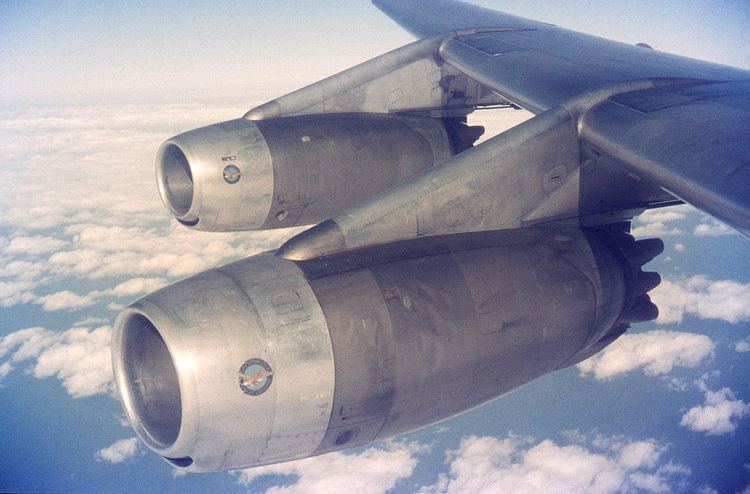 | ||
The Pratt & Whitney J75 (company designation: JT4A) was an axial-flow turbojet engine first flown in 1955. A two-spool design in the 17,000 lbf (76 kN) thrust class, the J75 was essentially the bigger brother of the Pratt & Whitney J57 (JT3C). It was known in civilian service as the JT4A, and in a variety of stationary roles as the GG4 and FT4.
Contents
Design and development
In military use, the J75 was used on the Lockheed U-2, the Republic F-105 Thunderchief, and the Convair F-106 Delta Dart. It was also utilized in the prototype and experimental Lockheed A-12, North American YF-107, Vought XF8U-3 Crusader III, Martin P6M SeaMaster, and Avro Canada CF-105 Arrow.
Before the arrival of the Pratt & Whitney JT3D turbofan engine, the JT4A was used to power certain Boeing 707 and Douglas DC-8 models, bringing improved field performance in the medium-range Boeing 707-220 and Douglas DC-8-20, and intercontinental range in the Boeing 707-320 and the Douglas DC-8-30.
After its relatively short lifetime in the aircraft role, the JT4A found more enduring use in the naval role, where the FT4 was produced in a variety of models between 18,000 and 22,000 hp. Well-known uses include the first all-turbine warships, the Canadian Iroquois-class destroyers, as well as the United States Coast Guard's Hamilton-class cutters, and it was considered for the US Navy's Asheville-class gunboat. The same basic powerplant saw much wider use as a peak demand power turbine running on natural gas. From its introduction in 1960 over 1,000 FT4s have been sold, with many of them still in operation for electrical generation. Outdated by modern standards, refits are available that add catalytic converters to lower their emissions.
Variants
Applications
Specifications (J75 / JT4A-3)
Data from Jane's All the World's Aircraft 1962-63
